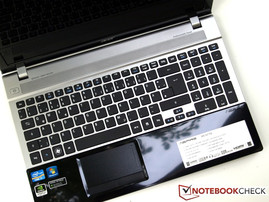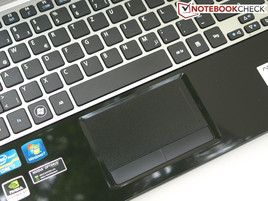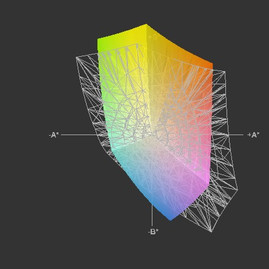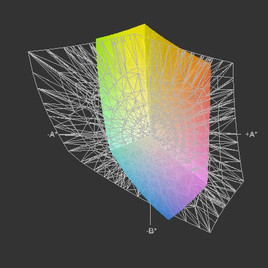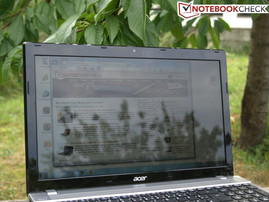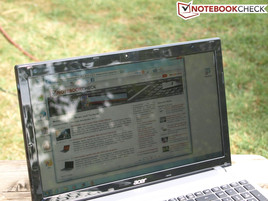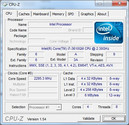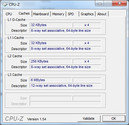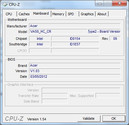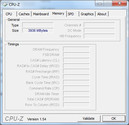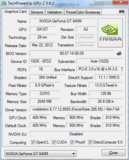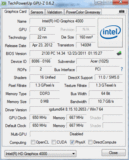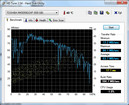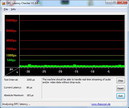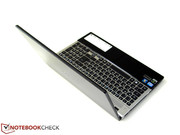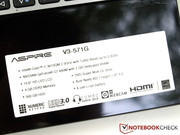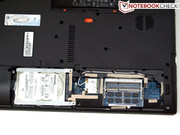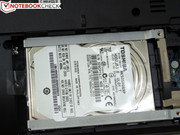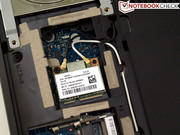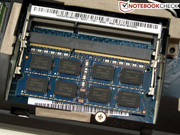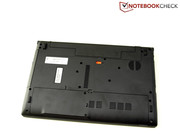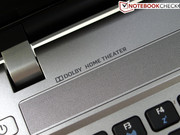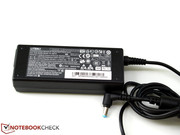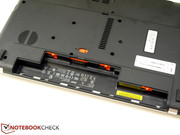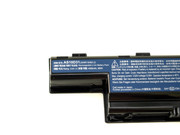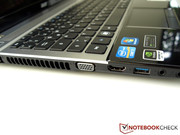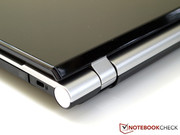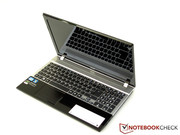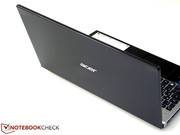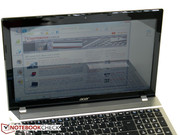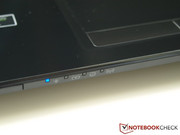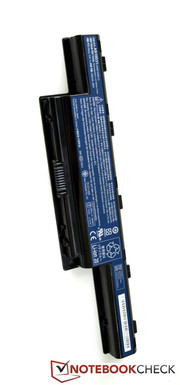Review Acer Aspire V3-571G-73614G50Makk Notebook

"Timeless elegance and fast computing power" promises Acer with its V3 series and offers 14-inch, 15.6-inch, and 17.3-inch models. As part of the Aspire family, the series is not aimed at the professionals, but rather at the end user. We already reviewed the larger brother of our test candidate, the Aspire V3-771G, in May this year. We now turn our attention to the 15.6-inch model.
The "G" in the name already suggests that there will be a proper graphics performance. Our V3 aims towards the multimedia user and should also appeal to the gaming enthusiasts. Therefore, it is equipped with an Intel Core i7-3610QM entry-level quad-core processor, NVIDIA GeForce GT 640M graphics card, 4 GB system memory and a conventional 500 GB hard drive with 5400 rpm. The alternative models differ in terms of CPU, system memory and hard drive capacity.
Case
On the outside, the housing strongly reminds us of its larger brother, the Aspire V3-771G. The glossy piano black surfaces guarantee a sensation right after unpacking. The Aspire V3 sparkles in the areas of the display lid, the screen bezel, and the palm rests, although even after a short period of use, these are covered in visible finger prints and dust particles. The sticky feeling corresponds to the material and is not convincing. Fortunately this criticism does not apply to the keyboard with silver border, which gives the V3 an elegant touch, and the abraded matte keys. The use of a higher quality material is desirable, but given the low entry price, the material choice is fine.
The rigidity of the plastic housing, apart from the usual weak point above the optical drive, remains without criticism. Creaks, wobbling, and unequal component fittings were not observed. The torsional rigidity of the display lid is sufficient. When lifting the display at one corner, it barely gives in and no picture distortions were observed.
The hinges do a good job and hold the display relatively secure in place. The teetering when changing the opening angle is within limits. In addition, the notebook can be opened with one hand.
Connectivity
The number of available interfaces is fine, but it cannot be described as particularly generous. On board are a total of 3 USB ports, including a USB 3.0 port on the left side. External displays can be connected via either the analog VGA or the digital HDMI. Digital audio transmission is possible through the HDMI. Headphones and a microphone can be connected to the separate 3.5 mm jacks. A 5-in-1 card reader, which supports MMC, SD, MS, MS Pro and xD, rounds up the connectivity options.
Less optimal, in our opinion, is the interface layout. Almost all ports are located at the front most area of the left and ride side of the notebook. The interfaces are thus easily accessible and visible, but depending on the use, the cables can restrict working space on the sides of the notebook. In addition, the fan will keep warm the hand of lefties, when using an external mouse.
Communication
Via the Broadcom NetLink BCM57785 PCI-E Gigabit Ethernet controller (10/100/1000 MBit), the 571G can be connected to a Gigabit Ethernet network. The Atheros AR5BWB222 Wireless Network Adapter supports IEEE 802.11 a/g/n and allows more or less, depending on the infrastructure, a fast connection via Wi-Fi hotspot. The Bluetooth 4.0 rounds up the communication options. All of the communication modules meet the current technical standards.
Accessories
The package basically contains only the most necessary accessories. In addition to the battery and the power supply, we find a quick start guide and a warranty leaflet. The user is responsible for creating a recovery DVD. This can easily be done with Acer's eRecovery Management Tool. Apart from these, there are several Acer tools and software pre-installed by third parties.
Maintenance
The hard drive, system memory, and the WLAN module are accessible through a maintenance cover. On the other hand, the cleaning of the fan proves to be more difficult, because you would need to disassemble the device.
Warranty
According to Acer, all of the V3-571G models come with a two-year warranty (24 months) including Pick-up-&-Return service, one year of which is International Travellers Warranty.
The input devices are visually and mechanically very similar to those in the larger V3 771G. Therefore, we will summarize only the main characteristics.
Keyboard
A chiclet keyboard with 15 x 15 mm (0.59 inches) large alphanumerical keys is installed. The arrow and function keys are, as is so often the case, significantly smaller. Fortunately, the 15.6-inch notebook comes with a separate numpad. Slight deviations from the standard layout are the missing spacings in the area of the left Shift and Enter keys. After a short period of familiarization, this should cause no problem when typing.
We are satisfied with the mechanical properties of the keyboard, clear pressure point, and the medium stroke. The typing noise is also not too loud.
Touchpad
The Elan Smart Pad supports multi-touch gestures and is clearly separated from the rest of the housing. The gliding on the abraded surface is good. We still think that the sensitivity of the Tap-to-Click is too high in the 15.6-inch notebook. Overall the touchpad does fit individual needs. The stroke of the corresponding buttons is short and the pressure point fairly low. Thus the two keys work relatively silent.
Display
Our test candidate has an HD panel made by LG Phillips, model LP156WH4-TLA1. This means 1366 x 768 pixels resolution and a 16:9 picture format for the 15.6-inch TFT display with LED lighting. This resolution is quite common among 15-inch notebooks in the same affordable entry-level price range, but a higher resolution would be desirable because of its higher clarity. Unfortunately the display is also not anti-glare, which in practice leads to limitations because of the disturbing reflections.
Alternative models offer up to HD+ resolution, but a matte option, as is the case with many consumer notebooks, is not available. This does lower the price, but is also noticeable in the measured values: the maximum brightness is 205 cd/m². The average is about 198 cd/m², which is even below the 200-cd/m² mark. The relatively high black level of 1.55 cd/m² leads to low contrast ratio of 132:1.
| |||||||||||||||||||||||||
Brightness Distribution: 93 %
Contrast: 132:1 (Black: 1.55 cd/m²)
53.4% AdobeRGB 1998 (Argyll 3D)
71.6% sRGB (Argyll 3D)
53.6% Display P3 (Argyll 3D)
The viewing angles are typical for a notebook panel. Horizontally, the stable operating angle is rather generous. But even here the glossy surface is detrimental: with the flattening of the angle, the annoying reflections quickly occur.
Vertically, the distortion can be noticed even sooner. Depending on the angle, the picture is either over-brightened or darkened. When viewing from below, the colors are quickly inverted.
The Aspire V3-571G is available in different configurations. The top model offers for 1000 Euros (~$1257) an Intel Core i7-3610QM, an Nvidia GeForce GT 640M, 8 GB DDR3 SDRAM and 1 TB of hard drive space. The entry level must do with a Core i5-3210M CPU, 4 GB RAM and a smaller 500 GB hard drive. Common to all Aspire-V3-571G models is the middle class graphics card by Nvidia.
Our test model Aspire V3-571G-73614G50Makk is equipped with an Intel Core i7-3610 QM CPU, Nvidia GeForce GT 640M, 4 GB of system memory and a 500 GB hard drive and thus places in the middle of the price range of current Aspire-V3-571G models. This hardware configuration is aimed at multimedia users and is also suitable for casual games. Thus this is no thoroughbred gaming notebook.
Processor
The Intel Core i7-3610QM in our test unit is an entry-level quad-core processor from Intel's latest Ivy Bridge family. Hyperthreading allows the four physical cores to process up to 8 threads simultaneously. Thanks to the Turbo Boost, the basis frequency of 2.3 GHz can be increased to 3.3 GHz. In idle state, in order to save energy, the frequency drops to 1200 MHz. You can find more details about the CPU in our CPU database. Our Benchmark list of mobile processors and the Performance comparison of current Ivy Bridge quad-core processors allows you to order them in terms of power.
In order to evaluate how the CPU in our test unit behaves in comparison to similarly equipped devices, we performed a series of CPU oriented benchmarks. In both single- and multi-core tests, the results remained without deviations. Thus our V3 571G scored, for example, 5548 points in Cinebench R10 64 Bit Single Rendering and 20558 points in Multi Rendering. The newer Cinebench R11 showed 6.1 points in Multi Rendering. Similar 15-inch notebooks, such as the Asus G55VW-S1020V (GeForce GTX 660M) and Schenkers XMG A502 (GeForce GT 650M) showed comparable results. The larger brother is also equipped with the same CPU, but especially in the multi-core rendering is slightly faster.
Unfortunately, even in high performance profile, the whole CPU performance is not available on battery power. The Cinebench R10 results fell to 4107 points in Single and to 16012 points in Multi-Rendering. This means that our test unit works about 35% and 28% faster respectively when plugged in.
System Performance
In order to assess the overall performance of the Aspire V3-571G test model we use the PCMark tests. The PCMark Vantage showed a result of 9418 points, the PCMark 7 - 2427 points. Here the conventional hard drive works as a disadvantage, although it still has very good results for a 5400 rpm unit, as you will see later on.
The Asus G55VW-S1020V (3610QM, GeForce GTX 660M, 7200 rpm HDD) is even a bit worse off in the PCMark Vantage with a score of 8948 points. Our test unit cannot keep up with models with SSDs. The Schenker XMG A502 (3610QM, GeForce GT 650M, Intel SSD 330 Series SSDSC2CT120A3K5), for example, scored 20151 points. The larger brother (3610QM, GeForce GT 650M, Intel SSD 320 Series) scores 14757 points.
In PCMark 7 the Asus G55VW-S1020V overtakes our test unit with 2995 points. The Schenker A502 pulls away, as was expected, with 3750 points. The larger Aspire V3-771G (4160 points) does even better than the rivals from Schenker.
Overall office applications and internet are not a challenge for the notebook. It is well suited for multimedia applications. Gaming, albeit at partially reduced graphics, is also possible.
| PCMark Vantage Result | 9418 points | |
| PCMark 7 Score | 2427 points | |
Help | ||
Storage Devices
Our Aspire V3-571G is equipped with a conventional hard drive by Toshiba, carrying the model MK5059GSXP (-> manufacturer's information). It operates at 5400 rpm. Of the 500 GB capacity, 17 GB is reserved for a recovery partition. Effectively 448 GB is available to the user for the operating system and other data.
In terms of performance, the installed hard drive is one of the faster 5400 rpm models. The access time of 17.1 ms is comparable to slower 7200 rpm models. The picture is the same in terms of the average transfer rates.
The optical drive installed in our test unit is a MATSHITA DVD-RAM UJ8B0AW. Currently no models with Blu-Ray drive are available.
Graphics Card
Currently the Aspire V3-571G comes, depending on the model, with an Nvidia GeForce GT 640M with 2 GB DDR3 video memory. It is a graphics card of the upper middle class, which is often found in multimedia notebooks. The DirectX 11 capable card is based on the GK107 chip of the Kepler family. You can find more information in our database. For a performance comparison, you can use our benchmark list of mobile video cards as well as games list.
In order to evaluate the GeForce GT 640M in our test unit, we ran some 3D benchmarks. Happily, the graphics card behaved as expected. Thus our test model scored 12843 points in 3DMark 06. In 3DMark Vantage the result was 7625 points and in 3DMark11 - 1926 points.
In the 3DMark06 the larger brother with GT 650M is marginally faster and the same goes for the Schenker XMG A502 (GeForce GT 650M), which scored 13067 points. The Asus G55VW-S1020V with GeForce GTX 660M surpassed, as per our expectations, our test model with 16041 points. Compared to other notebooks with GT 640M, our test unit is at the top, followed closely by the MSI CX70-i789BW7H (3610QM, GeForce GT 640M, 12545 points).
In the 3DMarkVantage the places are switched and our V3-571G falls behind the MSI CX70-i789BW7H. Still, in comparison with notebooks with the same graphics card, it is among the top. The above mentioned notebooks with better graphics cards, are significantly faster, although the two models with the GeForce GT 650M are only 10% to 12% faster.
The same applies to the 3DMark 11 scores. Again our test model belongs among the top notebooks with GT 640M.
In addition, unlike the CPU, the full graphics capabilities are available on battery power.
| 3DMark 06 Standard Score | 12843 points | |
| 3DMark Vantage P Result | 7625 points | |
| 3DMark 11 Performance | 1926 points | |
Help | ||
Gaming Performance
According to Acer's advertising, the Aspire V3 should also be suited for computer games. The hardware configuration and the 3D performance, established with the help of synthetic benchmarks, are convincing. However, for gamers the practical performance is the most interesting. Therefore, we subjected our Aspire V3 to a couple of practical gaming tests.
We begin with the Anno 2070 (Demo). At high graphics (1366 x 768, high, AA, 2 x AF) we measured with the help of Fraps an average frame rate of 30 fps. Thus our test model positioned itself between notebooks with the AMD Radeon HD 7730M or the Nvidia GeForce GT 650M (faster) and such with the AMD Radeon HD 6770M or the Nvidia GT GeForce 630M or the GT 555M (slower). Anno 2070 should be playable at these settings.
| Anno 2070 | |||
| Resolution | Settings | Value | |
| 1920x1080 | Very High Preset, on AA, 4xAF | 15 fps | |
| 1366x768 | High Preset, on AA, 2xAF | 30 fps | |
| 1366x768 | Medium Preset, on AA | 50 fps | |
| 1024x768 | Low Preset | 119 fps | |
Let us continue with the graphically demanding Battlefield 3. The popular shooter is smoothly playable only at medium settings (1366 x 768, medium, AA, 4 x AF). If you want to enjoy higher graphics (1366 x 768, high, 16 x AF), you would need at least a GT 650M, such as in the larger Aspire V3-771G. The positioning between the above mentioned graphics card (see Anno 2070) remains.
| Battlefield 3 | |||
| Resolution | Settings | Value | |
| 1920x1080 | ultra, 4x MSAA, 16xAF | 11 fps | |
| 1366x768 | high, -AA, 16xAF | 25 fps | |
| 1366x768 | medium, -AA, 4xAF | 33 fps | |
| 1024x768 | low, -AA, 2xAF | 48 fps | |
Neither FIFA 12 nor the somewhat older CoD: Modern Warfare 3 pose any challenge for our test model. The Elder Scrolls V: Skyrim ran similarly to Anno 2070.
Overall we can say that most current demanding 3D games can be played at least at medium settings and at the native resolution. The GT 640M is positioned in the upper middle class and offers casual gamers an interesting choice.
| low | med. | high | ultra | |
|---|---|---|---|---|
| Fifa 12 (2011) | 268 | 178 | 144 | 102 |
| Battlefield 3 (2011) | 48 | 33 | 25 | 11 |
| CoD: Modern Warfare 3 (2011) | 165 | 96 | 75 | 55 |
| The Elder Scrolls V: Skyrim (2011) | 57.6 | 42.3 | 31.3 | 17.2 |
| Anno 2070 (2011) | 119 | 50 | 30 | 15 |
Emissions
Noise Levels
Despite the powerful components, the notebook is not particularly loud in common applications. Every now and then the fan comes to a complete halt. In idle state, the noise level is around 32.8 dB(A).
Under load the fan turns up to 38.1 dB(A), which is still acceptable. Even during the stress test, in which both processor and graphics card work at 100% for several hours, the 40 dB(A) threshold is not reached. Irregularities in the fan speeds, not caused by changing work load, could not be observed. The noise itself is more comfortable, at the lower frequency.
Noise level
| Idle |
| 32.8 / 34.4 / 34.4 dB(A) |
| HDD |
| 33.5 dB(A) |
| DVD |
| 39.2 / dB(A) |
| Load |
| 38.5 / 38.1 dB(A) |
 | ||
30 dB silent 40 dB(A) audible 50 dB(A) loud |
||
min: | ||
Temperature
When not under load, the temperature of the surfaces of the Acer Aspire V3 571G is well within limits. In this scenario and 25 oC room temperature, we measured a maximum value of 36 oC.
During our hours-long stress test, the temperatures on both the surface and the bottom of the notebook exceeded the 50 oC threshold. Parts of the keyboard and the touchpad felt uncomfortably warm. Thus you should avoid using the notebook on the lap when running demanding 3D applications such as games.
While monitoring the hardware components through HWInfo, we noticed that the CPU frequency drops below the base 2.2 GHz as soon as the temperature reaches 100 oC. As the temperature decreased, the clock frequency increased again. The same phenomenon was observed with the larger Aspire V3-771G. The 3DMark06 Test, which we ran immediately afterwards, showed only marginally different results than the one we ran in cold state.
(-) The maximum temperature on the upper side is 54 °C / 129 F, compared to the average of 36.9 °C / 98 F, ranging from 21.1 to 71 °C for the class Multimedia.
(-) The bottom heats up to a maximum of 56.7 °C / 134 F, compared to the average of 39.2 °C / 103 F
(±) In idle usage, the average temperature for the upper side is 33.1 °C / 92 F, compared to the device average of 31.3 °C / 88 F.
(-) The palmrests and touchpad can get very hot to the touch with a maximum of 46.6 °C / 115.9 F.
(-) The average temperature of the palmrest area of similar devices was 28.7 °C / 83.7 F (-17.9 °C / -32.2 F).
Speakers
The stereo speakers are located above the keyboard and are labeled as "Dolby Home Theater" and "Professionally Tuned". The sound is satisfactory, though bass-lacking and a bit tinny when using the standard settings. The maximum volume is enough for indoor use. If the Dolby Home Theater is configured properly, the sound quality improves significantly.
We have no complaints about the 3.5 mm audio jack. Those who value digital audio transmission, must use the HDMI output.
Battery Life
Power Consumption
In idle state (no load) the energy consumption of the Aspire V3 is between 8.3 and 14.3 W. Intel's Ivy Bridge CPU and Nvdia's Optimus ensure that the consumption is at minimum in low load scenarios, despite the high-performance components.
Under load the energy consumption reach a maximum of 90.7 W. Thus the included 90 W power supply cuts it a bit close.
| Off / Standby | |
| Idle | |
| Load |
|
Key:
min: | |
Battery Life
Our test candidate features a 48 Wh Lithium-Ion battery (10.8 V; 4400 mAh). The maximum runtime of almost 7.5 hours was reached in Battery Eater Reader's Test with energy saving profile on, Wi-Fi module off, and lowest display brightness.
We measured the minimum runtime with the help of the Battery Eater Classic Test, employing high performance profile, maximum screen brightness, active GT 640, and Wi-Fi turned on. In this scenario, the runtime was 1.5 hours.
The battery life in practice is somewhere between these two values. For both practical tests, the GeForce GT 640 remained inactive, since the integrated HD 4000 is more than enough in terms of performance and consumes less energy. We began with our WLAN test, which simulates typical web browsing with the help of a script. With 150 cd/m² brightness, active WLAN module (but not Bluetooth), and energy saving profile, the notebook turned off after 3.25 hours. In the DVD test with maximum screen brightness, "balanced" profile, and wireless modules turned off, the battery lasted for close to 3 hours.
Despite the relatively smaller battery, our test unit did well when compared to notebooks with similar hardware. In addition to the Optimus technology, the lower maximum screen brightness and the limited CPU performance are also responsible on the battery power levels.
Verdict
The Acer Aspire V3-571G not only looks elegant, but also offers enough performance for multimedia use and casual games. Unfortunately the glossy surfaces are prone to dirt, although considering the price, the overall sturdy housing is in order.
In addition, Acer surprises us with an above-average battery life, considering the hardware configuration and battery capacity. But this comes at a price: the screen has lower brightness, relatively poor contrast, and the CPU performance is limited on battery power. The mobility is limited because of the glossy display. In addition, the temperatures under load are not perfect for playing demanding 3D games.
The interfaces available are typical for a multimedia oriented notebook. The positioning of the ports at the front of both sides is not optimal. On the other hand, we liked the comfortable keyboard, although the touchpad could use some driver optimization.
The Acer Aspire V3-571G is overall well equipped for multimedia use and the occasional game. It is aimed at the home user with higher demands on the graphics performance. But this is no purebred gaming or desktop computer.






